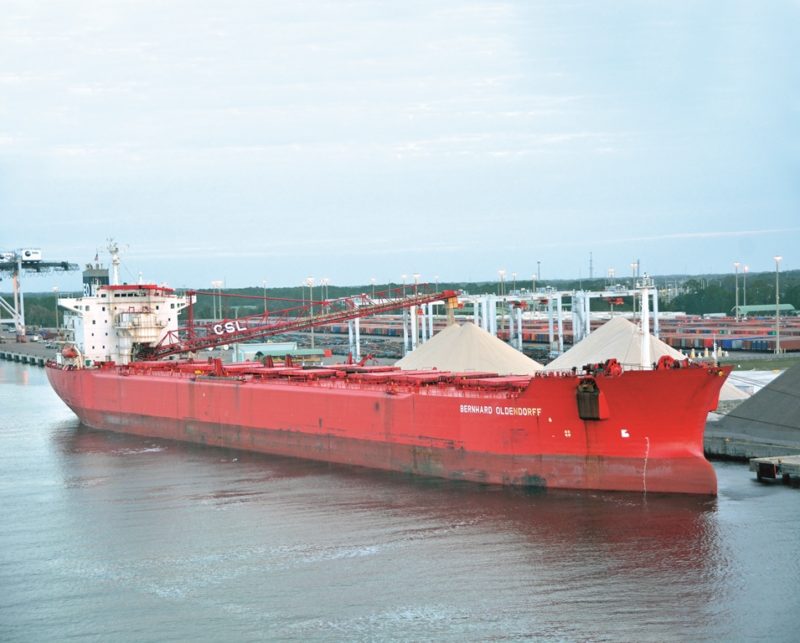
One hundred years ago on 19th February 1921, Egon Oldendorff (1900-1984) was made a partner in the shipping company of Lilienfeld & Holmuth in Hamburg two days after his 21st birthday. He became the sole partner when Lilienfeld died at the end of 1921. During 1922/23, his firm acquired two coasters of 600 grt in Planet and Komet, both already nearly forty years old. Planet was trapped in the ice in the Baltic during the winter of 1928/29 and received bunkers and supplies from the German battlecruiser Schleswig-Holstein, and later became a total loss in November 1943 after more than 62 years of service.
Egon Oldendorff had been born on 17th February 1900 as the youngest of three children at Dorum near Bremerhaven and went to school in Dorum and Lehe. His father Ludolf Oldendorff had been a banker and auctioneer, and at the age of 16 years Egon went to work on the farm of his uncle Gustav Schmidt-mann in the small village of Alsum. He was called up for Army service towards the end of World War I, and was discharged from the Army on 31st December 1918. He worked in his father’s bank until June 1920, and then had become a trainee in the shipping firm of Lilienfeld & Holmuth. He became very acquainted with the German coastal and North Sea trades.
Egon moved his office to Lubeck in 1925, his company was now called Nordische Dampfer Reederei, and acquired an even older coaster in 1926, this time built for Turnbull at Whitby back in 1871 as Whitehall, and was renamed Magnet. She was sold to Italian owners three years later, and unfortunately sank 15 miles SW of Cape Spartiventi in May 1932 while on a voyage from Porto Empedocie to Pescara with rock salt. The original funnel colours of the fleet were black with a white ‘EO’ on a blue band. Egon had a small fleet of six short sea traders in 1932 with names beginning ‘Nord’, which became a traditional Oldendorff nomenclature. The veterans Nordstern, Nordland, Nordlicht, Nordmark, Nordkap and Nordfels had an average age of 34 years, with Nordfels being the former Burnett Steamship Company of Newcastle collier Towneley built in 1904 by Wood, Skinner of Gateshead.
The steamer Peter Benoit of 1,359 grt built in 1902 was purchased in 1932 and was the first ship to be named after a family member as Gisela Oldendorff. The Depression years were just as severe in Germany as in England, with most of the six strong fleet laid up for long periods, particularly in the bad winter of 1932. A fledgling liner service from Germany to Scandinavia was abruptly stopped in 1929 and was never to be revived.
The end of the Depression and the rise in freight rates in 1936 for cargoes of pyrites from Spain to Northern Europe, or pitch from London to the Mediterranean meant a revival in trading. More veteran steamers were purchased, including an engines aft ‘Laker’ built by the Wallsend yard of Swan, Hunter & Wigham Richardson Ltd. in 1903 as Westmount and renamed Ludolf Oldendorff. Another purchase in 1936 was a steamer built back in 1893 as George Mahn of 1,101 grt and renamed after his son Klaus, born in 1933.
In 1939, Egon expanded from the North Sea and Baltic coal and timber trades into tramping with the purchase of the Dutch ship Leersum of 3,986 grt, completed in 1918 as Leersum at Capelle in Holland for the Oostzee N.V. Mij and renamed Henning Oldendorff. She was captured in the Denmark Strait by the British cruiser Colombo on 17th November 1939 while trying to reach Germany with iron ore from Huelva in Spain. By the end of the war, his small fleet of a dozen steamers had been reduced to only two by war losses. Gisela Oldendorff of 1,361 grt and Nordmark of 1,060 grt were too small to be surrendered to the victorious Allies and went back into service in 1947 under strict supervision of the Allies.
No new ships, except coasters, could be ordered or built in German yards until 1950 under the terms of surrender, when four new Oldendorff vessels came into service. These were the engines ‘midships Birte Oldendorff, Dorthe Oldendorff and Irene Oldendorff of around 3,000 dwt for the North Sea and Baltic trades, and Klaus Oldendorff of 5,500 dwt for tramping. Two of the smaller trio had been repossessed by banks shortly after their completion, and thus Egon was able to buy them at competitive lower prices. Irene Oldendorff sank three miles off Borkum island on 31st December 1951 while carrying coke, and unfortunately all of her crew were lost. The remaining pair were chartered out to Norddeutscher Lloyd, KNSM of Holland or Canadian Pacific on liner routes.
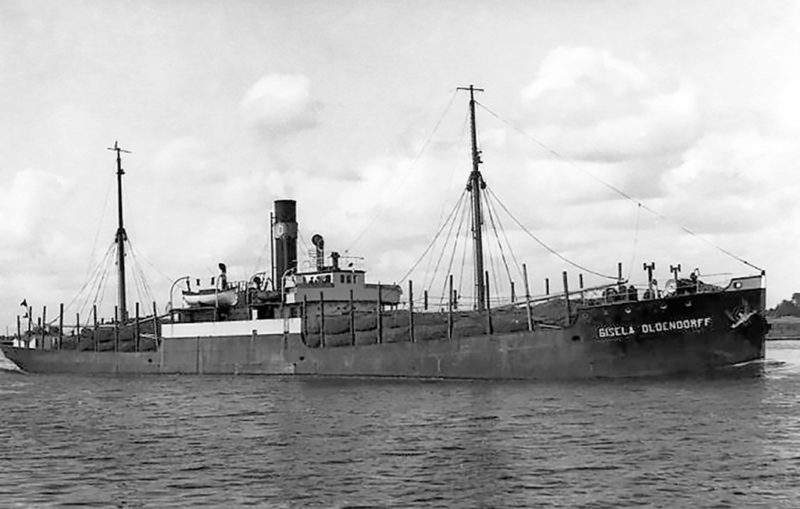

Two new ‘tween deck traders of 4,650 dwt were built as Ludolf Oldendorff and Dora Oldendorff in 1952/53 on dimensions of overall length 349.0 feet, and loaded draft of 20.3 feet, by the Orenstein yard in Germany. They were often chartered out to Norddeutscher Lloyd (NDL) to load copper ore at Callao in Peru and bagged coffee beans in Colombia for U. S. Gulf and Eastern Seaboard ports. They both were frequently sent up the St. Lawrence Seaway after its opening in April 1959, Dora Oldendorff making 33 voyages and Ludolf Oldendorff making 37 voyages on charter to Canadian Pacific. KNSM charters to the Caribbean saw them loading in 25 ports in the Caribbean, with other NDL charters for bagged coffee beans from Cabedelo near Pernambuco in Brazil.
A veteran Dutch tramp of 6,320 dwt was purchased in 1951 and renamed Henning Oldendorff, having been built back in 1920 as Stad Arnhem at Dordrecht for Halcyon Lijn. Another veteran Dutch tramp, Winsum of 5,255 dwt, built in 1921 by the Antwerp Engineering Company at Hoboken with a triple expansion steam engine built at Sunderland for Vinke & Company, was purchased in 1953 and renamed Dietrich Oldendorff. German shipyards got into their stride in 1956/57 with five new ships of between 10,780 dwt and 15,265 dwt, completed as the five hold engines ‘midships Eibe Oldendorff, Hinrich Oldendorff, Catharina Oldendorff, Helga Oldendorff and Johanna Oldendorff, and were joined by a purchased second hand tramp renamed as Christoffer Oldendorff, but built back in 1937 at Burntisland as Ginnheim. Two engines aft North Sea traders were completed by the Unterweser yard at Bremerhaven in Imme Oldendorff of 2,712 dwt in 1953 and Hille Oldendorff of 3,200 dwt in 1956.
The first engines aft bulker in the fleet was completed in 1957 by the Flensburger yard as Magdalena Oldendorff of 15,400 dwt, and served for 14 years until damaged by fire in November 1971 while dry-docked at Bremerhaven, and she was then sold to a Norwegian owner. By 1962, a fleet of 26 ships was being traded, including ten coasters in the North Sea and Baltic coal and timber trades. A new quartet of engines aft motorships of 4,385 dwt entered service that year as Christiane Oldendorff, Erna Oldendorff, Jobst Oldendorff and Hans Oldendorff with accommodation for four First Class passengers and equipped with ten derricks to serve three holds, with number one hold as a well deck. The last ship with a ‘Nord’ prefix to her name, Nordheim, was sold off shortly afterwards. New bulk carriers entered the fleet, including Klaus Oldendorff of 14,675 dwt, and engines aft bridge ‘midships Birte Oldendorff of 15,450 dwt, and Henning Oldendorff of 30,500 dwt in 1963, with the latter as the new flagship of the fleet, and followed by her sister Christoffer Oldendorff by the end of 1963.
Increasing sizes of bulkers by 1967 with higher service speeds of 16 knots included Helena Oldendorff, Regina Oldendorff, Dietrich Oldendorff, Tete Oldendorff, Rixta Oldendorff and Bernhard Oldendorff of 54,110 dwt. The Panamax bulkers Emma Oldendorff and Eckert Oldendorff were completed in 1969/70 by the Bremer Vulkan yard, and a further quartet was completed by the ‘3 Maj’ yard at Rijeka in Jugoslavia in1974/75 as Birte Oldendorff, Dora Oldendorff, Helga Oldendorff and Ludolf Oldendorff.
Helena Oldendorff sailed from Emden with coal for Japan in April 1967 on a seven month world voyage. She then crossed the Pacific in ballast to Peru to load phosphates for the Eastern Seaboard of the U.S.A, where she loaded coal again at Newport News for Japan via the Panama Canal and returned in ballast to the U.S. Gulf to load 36,650 tonnes of grain for Rotterdam. Grain, ores and coal were the staple trades of the Oldendorff bulker fleet e.g. Richards Bay to Wilhelmshaven with coal, Ghent to Newport News to load coal, Philadelphia to Puerto Ordaz in Venezuela to load iron ore, and Narvik to Antwerp with iron ore.
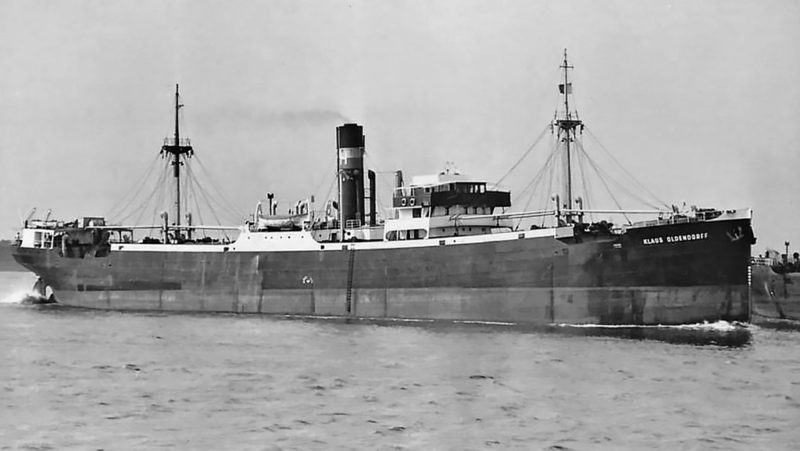
The first of eleven Oldendorff vessels to be flagged out was Catharina Oldendorff in 1971 to companies such as Wursata, Holsatia, Rhenania and Westfalia with vessels wearing ‘W’, ‘H’ and ‘R’ on the central funnel band instead of ‘EO’. Regina Oldendorff was flagged out as Bold Challenger and Tete Oldendorff was flagged out as Nautic Pioneer for use as floating grain stores at Hamburg during 1984/85. The last three of nine ‘SD14s’ built at Sunderland were also flagged out as Good Faith, Future Hope and Globe Trader, with Future Hope wrecked at Tomakonai in Japan on 26th January 1993 in a seriously bad position on rocks. She was cut up into three pieces and refloated and rebuilt with the name of Nordhope.
In 1971 on the 50th Anniversary of the Egon Oldendorff fleet, some 33 ships of 726,910 dwt were owned and employed 1,100 seafarers and 54 office staff. Charters to KNSM of Holland for Caribbean trading were taken up by four ‘German Liberty’ types of 15,000 dwt, and they were renamed after the Dutch towns of Bennekom, Baarn, Breda and Barneveld during 1971/75. This general cargo ‘Liberty’ replacement type was equally happy with bulk cargoes or breakbulk cargoes e.g. bulk grain, coal or other heavy cargoes, or coiled wire from Trois Rivieres on the St. Lawrence to European ports. By 1984, the fleet was composed of equal numbers of bulkers up to Panamax size, and break bulk ships, with also two VLCCs of 240,800 dwt completed in 1975 as Niedersachsen and Schleswig-Holstein that had disastrous trading results. They were laid up at Geltinger Bucht in the Baltic or Dubai in the Persian Gulf for many years until they were sold off in 1984 for a fraction of their enormous building costs.
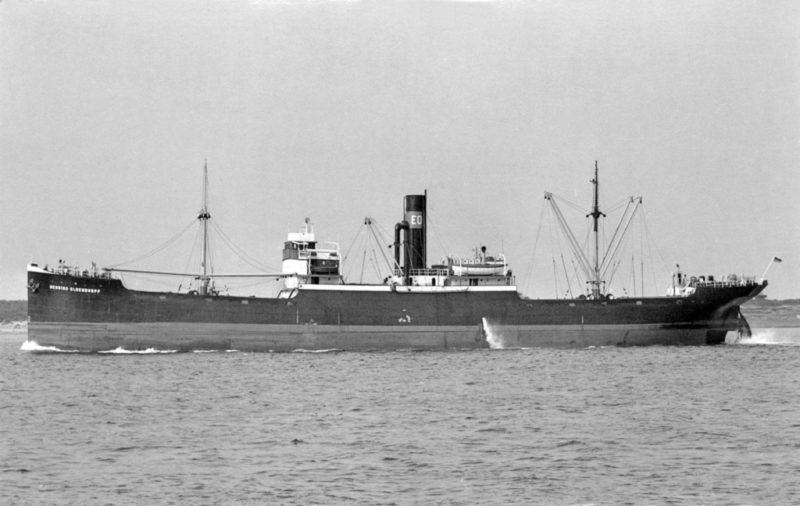

HENNING OLDENDORFF
Subscribe today to read the full article!
Simply click below to subscribe and not only read the full article instantly, but gain unparalleled access to the specialist magazine for shipping enthusiasts.
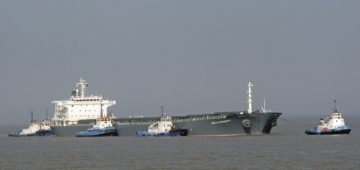



Comments
Sorry, comments are closed for this item